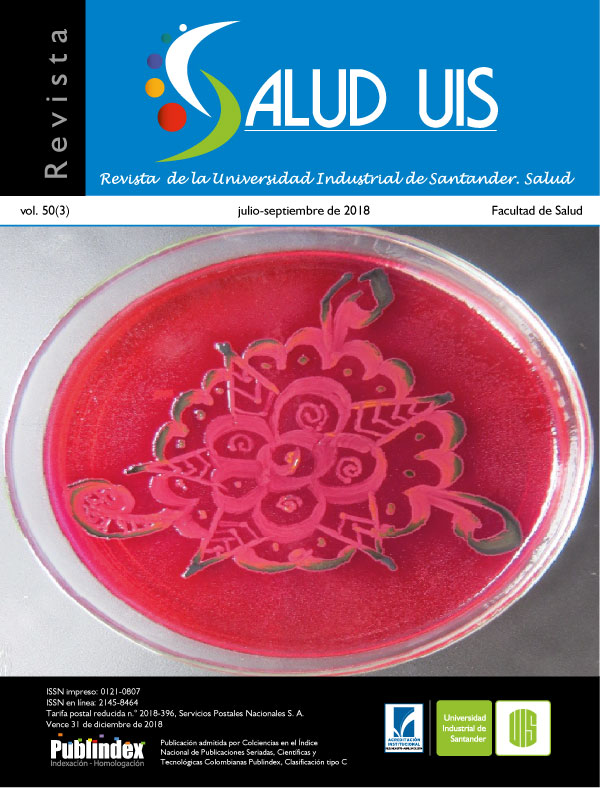Abstract
Introduction: An unreported phenomenon currently exists in Colombia, namely, massive emigration from Venezuela that is presenting a great challenge for Colombia’s society and health system. Barranquilla is one of the principal recipient municipalities in northern Colombia. Venezuelan emigrants and returning Colombians are settling in this city’s marginal zones, frequently under highly vulnerable environmental and social conditions. Objective: The present study is a brief exploration of the social and health needs in the Villa Caracas settlement. It is based on a semi-qualitative technique using free lists to explore the cultural domains associated with these needs. Presentation of Case: Villa Caracas is in southwestern Barranquilla, where roughly 100 Venezuelan families are believed to reside, in addition to returning and native Colombians who never relocated. While the inhabitants live in vulnerable conditions, the most important problems are not known. Methods: A total of 96 free lists were administered to inhabitants in Villa Caracas. Each subject was asked their sex, age, occupation, schooling, and migration status. The free lists included three questions: problems with the settlement, health problems, and where they go for medical care. Smith’s salience index was calculated for each domain. Results: A total of 96 persons participated, 33 of which were men. The average age was 31.2 years (s.d. 9.6; range 18-65). Of the total sample, 82.3% were Venezuelan, 8.3% were returning Colombians, and 9.4% reported having dual nationality. All of the participating Venezuelans had an irregular migration status. The principal perceived social needs were: sewer systems (Smith´s salience Index (SSI): 0.38), drinking water (SSI: 0.31), and electricity (SSI: 0.30). With regard to health problems, those that stood out were acute respiratory infection (SSI: 0.39) and unspecified fever (SSI: 0.20). All of the inhabitants reported that they were not treated due to being Venezuelan. Conclusions: This approach made it possible to highlight the vulnerable conditions of the immigrants, serving as a starting point for a more in-depth diagnostic which will enable developing a local response plan, especially with regard to environmental sanitation since this was the principal problem in the settlement and it poses a potential risk for the transmission of various infectious diseases.
References
2. Departamento administrativo nacional de estadística. Proporción de hogares que habitan en asentamientos precarios. Ficha Técnica. 2017.
3. ONU HABITAT. Primer Reporte del Estado de las Ciudades en Colombia. 2015.
4. Ministerio de Ambiente, Vivienda y Desarrollo Territorial. Lineamientos para la consolidación de la política de Mejoramiento Integral de Barrios MIB. 2009.
5. Meran Marín I. Villa Caracas: la dura vida en Barranquilla de los refugiados venezolanos expulsados por el hambre. Infobae; 2018.
6. González G. Así es Villa Caracas, el asentamiento de venezolanos en Barranquilla. El Tiempo; 2017.
7. Gravlee CC, Bernard HR, Maxwell CR, Jacobsohn A. Mode effects in free-list elicitation: comparing oral, written, and web-based data collection. Soc Sci Comput Rev. 2013; 31(1): 119-132.
8. Dressler WW. Cultural consonance: linking culture, the individual and health. Prev Med. 2012; 55(5): 390-393
9. Quinlan M. Considerations for collecting freelists in the field: examples from Ethobotany. Field methods. 2005; 17(3): 219-234.
10. Thompson EC, Zhang J. Comparative cultural salience: measures using free-list data. Field Methods. 2006; 18(4): 398-412.
11. Torres Tovar C. Ciudad Informal Colombiana, barrios construidos por la gente; 2009.
12. Uribe Castro H. Los asentamientos ilegales en Colombia; 2016.
13. United Nations. A Public administration perspective on local governance and service delivery; 2017.
14. Organización Internacional Para las Migraciones. Informe sobre las Migraciones en el Mundo; 2015.
Se autoriza la reproducción total o parcial de la obra para fines educativos, siempre y cuando se cite la fuente.
Esta obra está bajo una Licencia Creative Commons Atribución 4.0 Pública Internacional.
